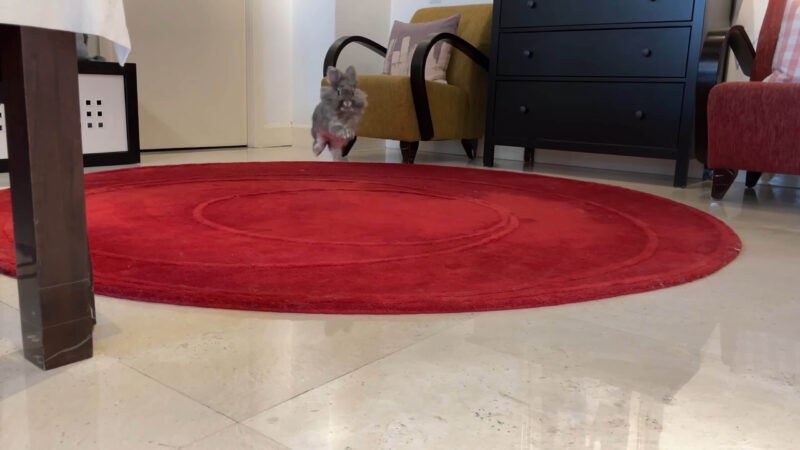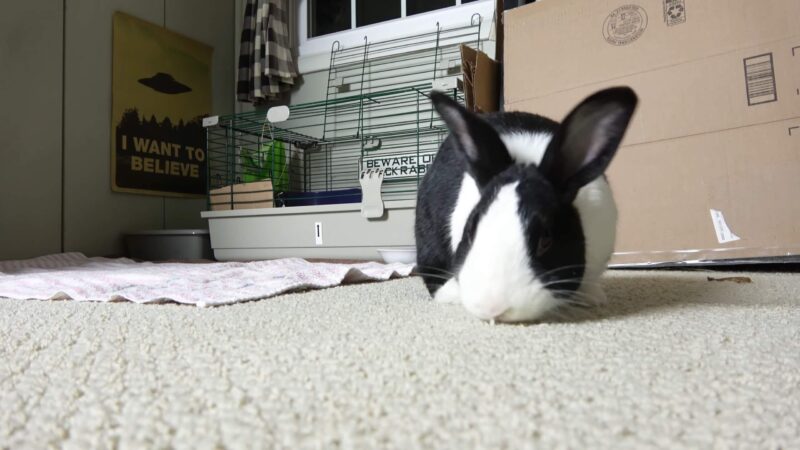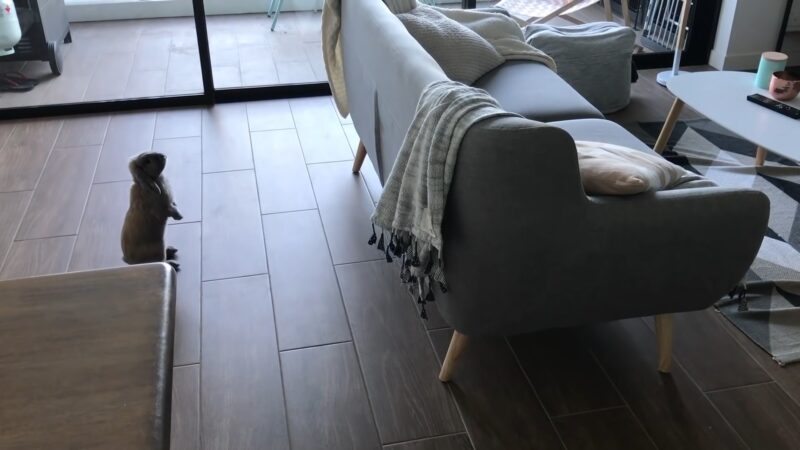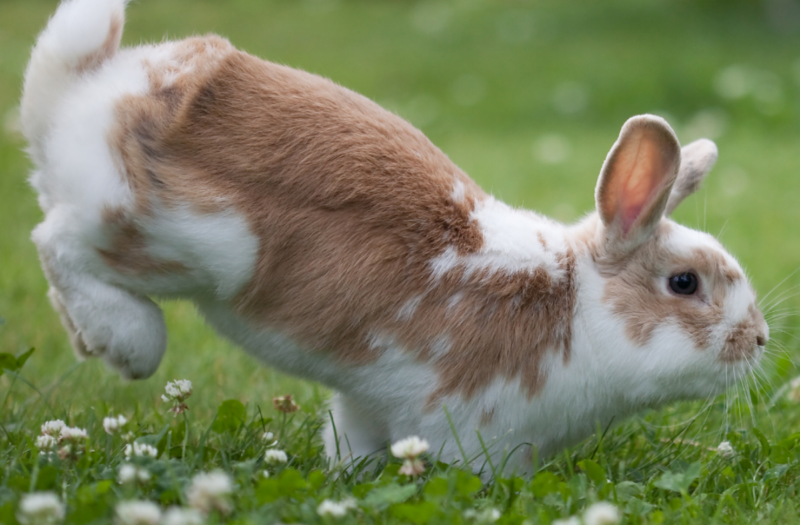Welcome to the whimsical world of bunnies and their most adorable quirk – the binky! Have you ever seen a rabbit suddenly leap into the air and twist around like a furry little acrobat? That’s a binky, and it’s basically a rabbit’s way of saying, “I’m so happy I can’t contain it!”
In this article, we’re diving into the hoppy world of rabbits to uncover why they do this super cute move. It’s not just about a jump; it’s about getting a peek into how our bunny friends feel and what makes them tick. So, hop on in, and let’s explore the ups and downs (quite literally!) of rabbit binkies!
Emotional Expressions in Rabbits

Rabbits, like many animals, have a range of emotions. They can feel happiness, fear, curiosity, and contentment. The binky is a direct manifestation of positive feelings. When a rabbit feels safe, content, and happy in its environment, it expresses this joy through binkying. This behavior is a healthy sign, indicating that the rabbit feels secure and is in a good state of mind.
The Role of Environment in Binky Behavior
The environment plays a crucial role in a rabbit’s tendency to binky. Rabbits are sensitive animals, and their surroundings significantly impact their mood and behavior. A spacious and stimulating environment, free from threats and filled with opportunities for exploration, encourages this joyful behavior. Factors such as the presence of hiding spots, toys, and enough space to run and jump contribute to a rabbit’s wellbeing, subsequently leading to more frequent binkies.
Physical Health and Binky Frequency

Physical health is closely linked to the frequency and vigor of binkies. A healthy rabbit, with a balanced diet and regular exercise, is more likely to exhibit this behavior. Conversely, a rabbit that is unwell, overweight, or suffering from joint pain may binky less often or not at all. Regular veterinary check-ups and attention to diet and exercise are crucial in maintaining the physical health that enables rabbits to express their joy through binking.
| Physical Health Concern | Impact on Binky Behavior |
|---|---|
| Poor Diet | Decreased frequency and vigor of binkies |
| Lack of Exercise | Reduced energy levels, leading to less frequent binkies |
| Overweight | Difficulty in performing binkies due to excess weight |
| Joint Pain | Pain and discomfort can prevent binkying |
| Dental Problems | Discomfort and pain can reduce binky frequency |
| Gastrointestinal Issues | General malaise and discomfort, leading to less binkying |
| Respiratory Infections | Decreased energy and general unwell feeling, affecting binky behavior |
| Parasitic Infections | Overall health decline, impacting binky frequency and enthusiasm |
Social Dynamics and the Binky

Rabbits are social animals, and their interactions with others, whether with humans or fellow rabbits, can influence their tendency to binky. Positive social interactions, such as gentle petting, playtime, or companionship with other rabbits, can trigger binkies. Rabbits that are lonely or lack social interaction are less likely to show such expressions of happiness. Thus, ensuring that a rabbit has a companion or receives regular, gentle interaction with its human caregivers can encourage this delightful behavior.
Age and Developmental Factors
The age and developmental stage of a rabbit can also influence binky behavior. Younger rabbits, full of energy and curiosity, may binky more frequently than older ones. However, this doesn’t mean older rabbits don’t binky; they might just do so less often or with less vigor. As rabbits grow and their personalities develop, their expressions of joy, including the binky, can change and evolve.
Binky as an Indicator of Wellbeing
The frequency and nature of the binky serve as an indicator of a rabbit’s overall wellbeing. Regular binkies suggest that the rabbit is happy, healthy, and content in its environment. A decrease in this behavior, especially if sudden, can be a sign of stress, illness, or unhappiness. Observing and understanding a rabbit’s binky patterns can help caregivers better attend to their pets’ needs and ensure their continued health and happiness.
FAQs
Can a rabbit’s binky style change over time?
Yes, a rabbit’s binky style can evolve over time. Factors like age, personality development, and changes in health can influence how a rabbit performs a binky. Younger rabbits may display more energetic and acrobatic binkies, while older rabbits might execute more subdued, less frequent binkies. Additionally, as a rabbit becomes more comfortable in its environment, its binky style might become more pronounced and frequent.
Is it possible for a rabbit to binky too much?
While frequent binkies are generally a sign of happiness, excessively repetitive or frantic binkying could indicate overexcitement or stress. If a rabbit’s binkying seems compulsive or is accompanied by other unusual behaviors, it’s advisable to consult a veterinarian to rule out any underlying issues.
Can all breeds of rabbits perform a binky, or are some breeds more inclined to do it than others?
All breeds of rabbits are capable of performing a binky. However, the frequency and style of binkies might vary between breeds due to differences in size, temperament, and physical capabilities. For instance, smaller, more agile breeds might perform more acrobatic binkies, while larger breeds may display less vigorous but equally joyful jumps.
Do rabbits binky when they are alone, or do they only do it when humans are present?
Rabbits can binky both when they are alone and in the presence of humans. Binkying is a natural expression of joy and does not necessarily depend on an audience. Rabbits may binky while playing by themselves or exploring their environment, indicating they are content and happy even when no one is watching.
Can environmental changes, like moving to a new home, affect a rabbit’s binky behavior?
Yes, environmental changes such as moving to a new home can affect a rabbit’s binky behavior. Initially, a rabbit might binky less as it adjusts to its new surroundings and deals with the stress of change. Once the rabbit feels secure and comfortable in its new environment, the frequency of binkies may return to normal or even increase.
If a rabbit stops binking suddenly, what should be the first course of action?
If a rabbit stops binking suddenly, the first course of action should be to assess any potential changes in the rabbit’s environment, diet, or routine that could have caused stress or discomfort. Observing for other signs of illness or distress is crucial. If there are no obvious environmental factors or if the rabbit shows other symptoms of illness, consulting a veterinarian is essential to ensure the rabbit’s health and wellbeing.
Final Words
And there you have it! We’ve hopped through the ins and outs of why rabbits do their adorable binky jumps. It turns out, these binkies are like a rabbit’s happy dance – a way for them to show the world they’re feeling top-notch. Every twist in the air is a tale of joy, a little celebration of life from our bunny pals.
So, the next time you see your rabbit do a binky, know that you’re doing something right and your furry friend is just bursting with happiness. Here’s to creating a world where every bunny gets to binky to their heart’s content!








